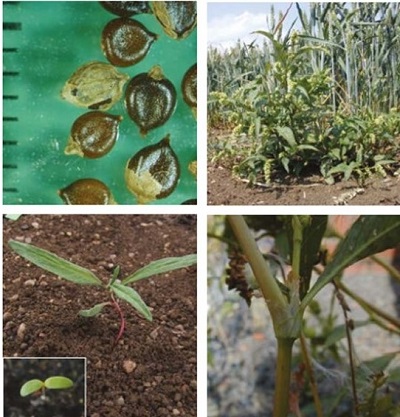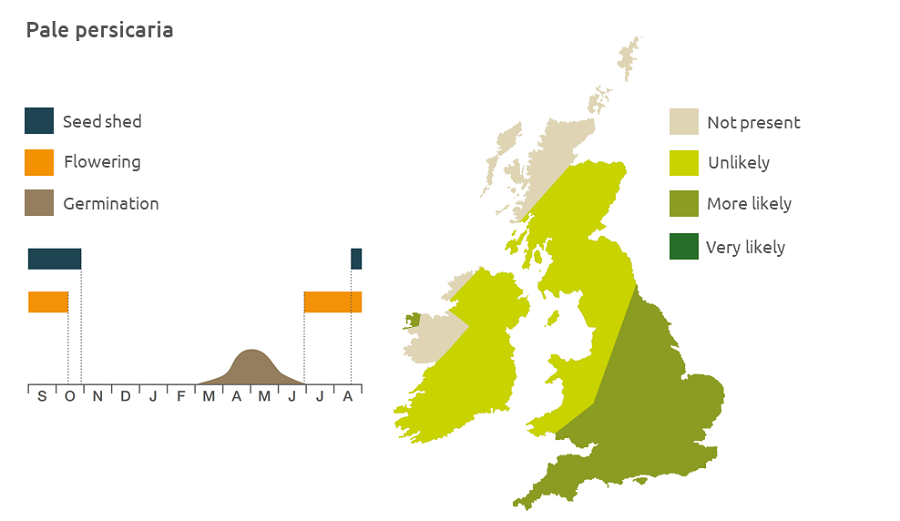- Home
- Knowledge library
- Distribution and biology of pale persicaria in the UK
Distribution and biology of pale persicaria in the UK
Pale persicaria is a common weed of all crops. Find out how to identify and control it.
Overview
Pale persicaria (Persicaria lapathifolia) is a common weed in all crops, particularly spring-sown ones. It may occur in open crops of winter wheat, possibly preferring more organic soils than the similar redshank. Flowers are self-pollinated or cross-pollinated by insects. The seeds may germinate in spring only after chilling.
- It is particularly competitive in spring crops
- It has value to biodiversity
Description
It is an annual of medium height 30–80 cm tall, with slightly hairy, often red stems. Leaves are strap-shaped and may be blotched with black. The flower spike is stout, packed with tiny flowers.
Key features
Young plant: The first true leaves are silvery with short hairs.
Plant: The sheath covering the leaf stem base has no hairs and lies loosely against the stem. The flowering stem is hairy.
Lookalikes
Pale persicaria may be confused with redshank: the first true leaves of pale persicaria are long and narrow and have silvery hairs, which also cover the stem; the first true leaves of redshank are broad and the plant is not hairy.

Location and life cycle

Geographic distribution
Pale persicara is associated with a wide range of habitats in both open and disturbed sites and in cultivated fields, up to a maximum recorded altitude of 450 m. It is less frequent in the north on less organic soils.
Soil type
It prefers slightly acid soils rich in humus and nutrients, often sandy loams.
Seed statistics
- Seed longevity: >5 years
- Germination depth: 5.3 cm
- Seed weight: 3 mg
- Seeds/plant: 800–850
Management
For advice on herbicides, please speak with your agronomist or adviser.
When was this information last updated?
This page is based on content from the encyclopaedia of arable weeds publication. Since it was first released in 2008, the publication has been redesigned several times but not revised. However, it remains a good foundation for general information on the distribution and biology of weeds.

